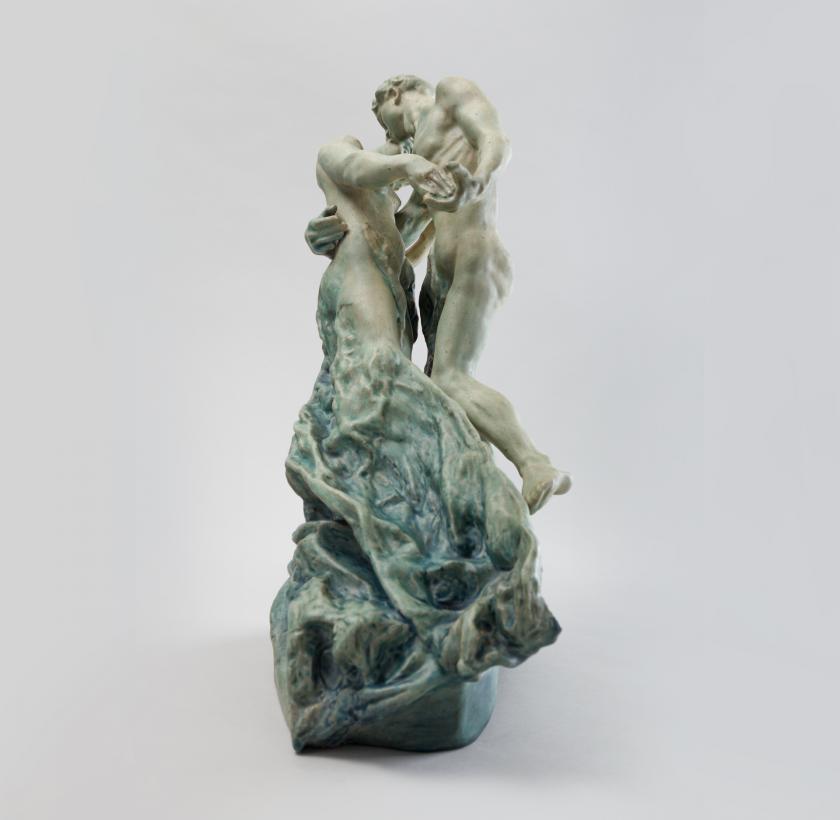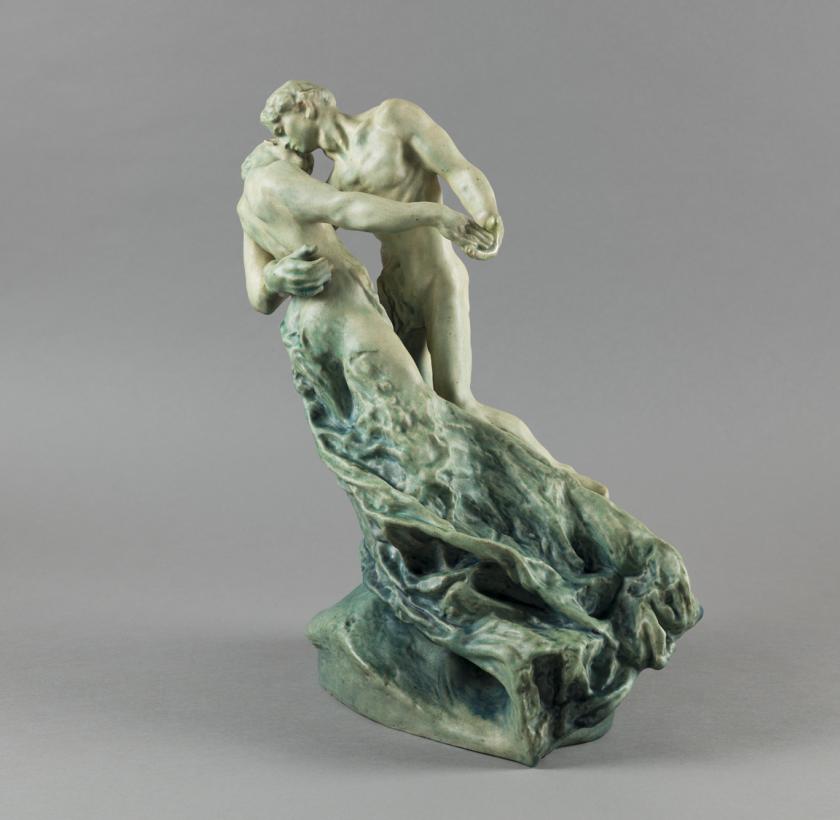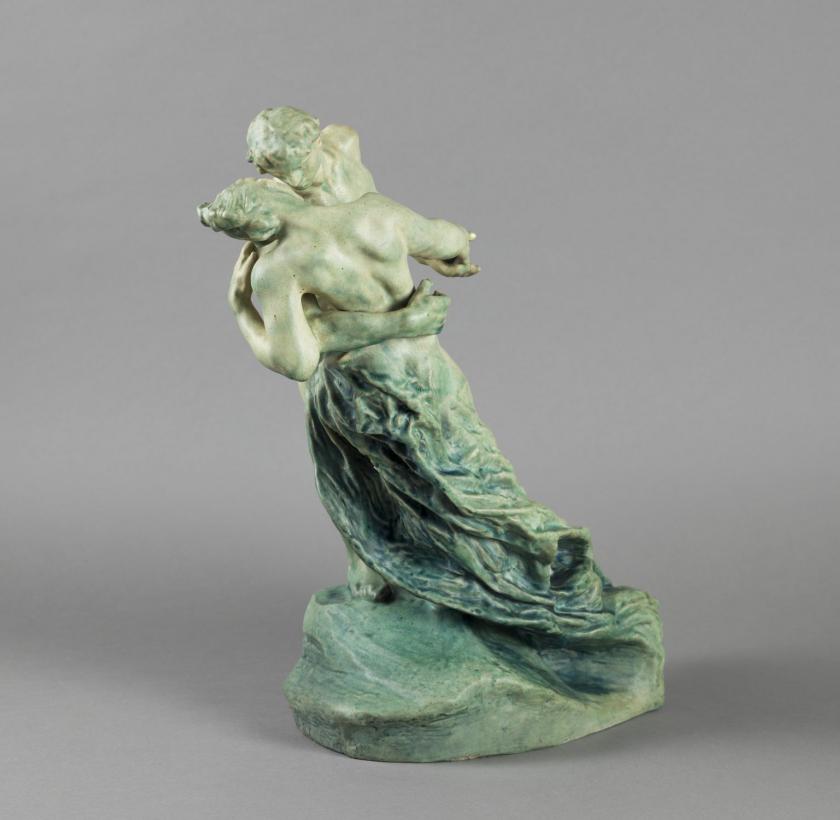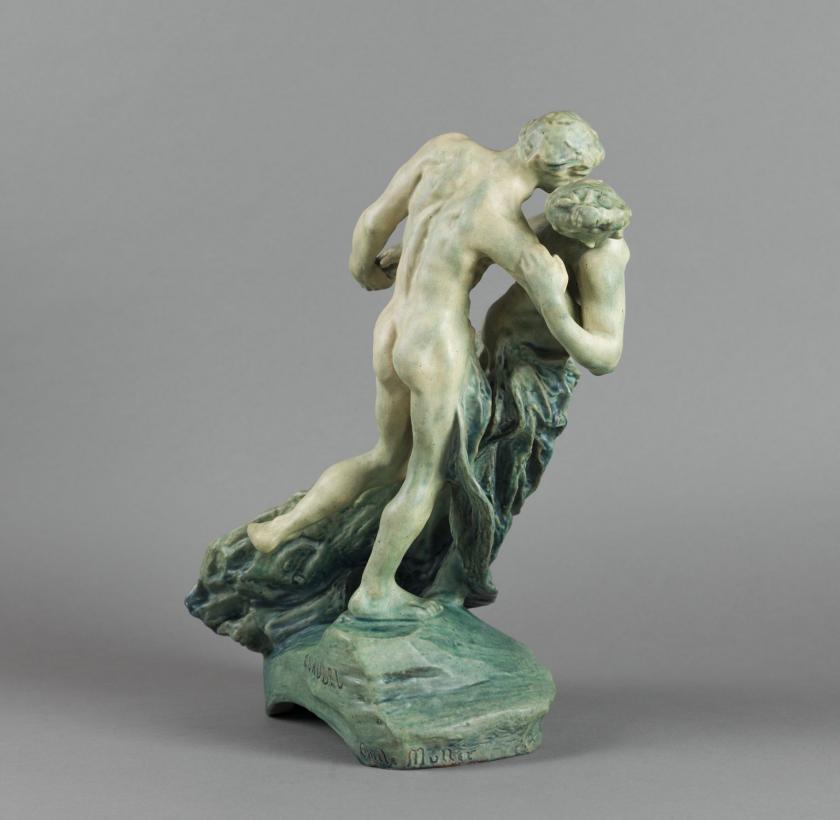La Valse
CLAUDEL CamilleLa Valse
CLAUDEL Camille (1864-1943)Emile Muller no14
La Valse (The Waltz) is arguably Camille Claudel’s most famous work. It was conceived between 1889 and 1893 and coincides with a period of intense production and the artist’s passionate relationship with Auguste Rodin.
In 1892, Claudel applied to the State for a marble commission, but the Beaux-Arts inspector refused the first version that featured dancers who were completely naked. To accommodate his expectations, the artist transformed the work by adding draperies, but the transition to marble was unsuccessful.
She then reworked the group and proposed a third version, with fewer draperies, smaller dimensions, and produced in several materials. It is examples of this third version that are presented in the Camille Claudel Museum. Only one of these examples in flamed stoneware has presently been located.
In the 19th century, the waltz was the couple’s dance by excellence and ballroom dancing spread throughout society. However, Claudel was not interested in recounting anecdotes or passing trends. The partial nudity of the dancers removes them from any temporal context and draws them towards a sense of universality. In this respect, the artist adheres to the symbolist trend. The swirling movement of the waltzers and the couple’s embrace embody the concept of a sensual dance. The diagonal of the bodies underlines imbalance, and the skirt accentuates the spiralling movement of the figures. In this way, the next step is already being suggested: The artist thus shows how swiftly the waltz unfolds, drawing the couple into a whirlwind that never seems to stop. With The Waltz, Camille Claudel won the appreciation of many of her contemporaries: “Only an elevated and open mind could have conceived this embodiment of what cannot be seen”, wrote Léon Daudet.











